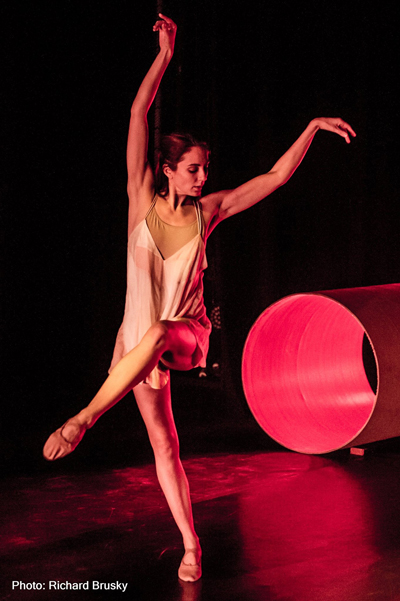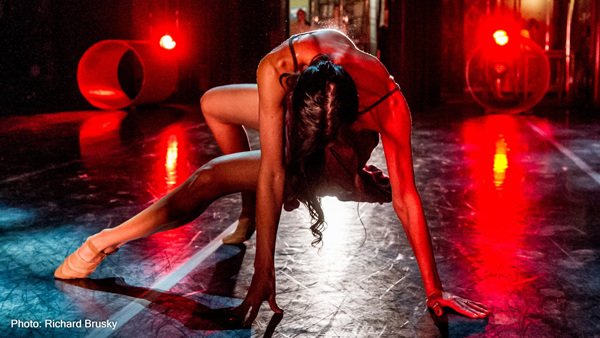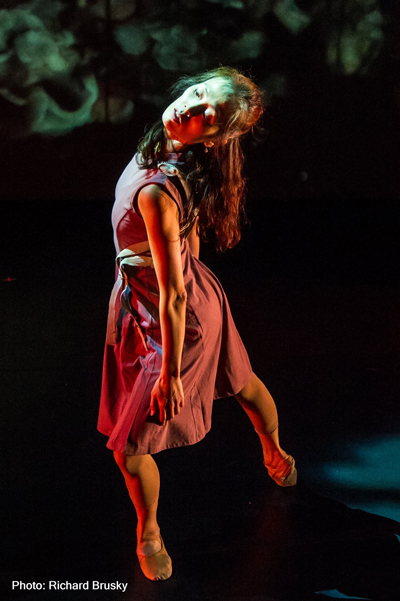“LIFE IS BUT A DREAM”…OR IS IT?
By: Hal de Becker
A reprise of “Lehi’s Dream’ was one of the two works written, choreographed and directed by Kelly Roth for SCN’s Fall Dance Concert at Horn Theatre.
In juxtaposing dreams and reality the dance-drama was provocative and interesting and was well performed mostly by CSN students. However, it was also overlong and enigmatic.

It was reminiscent of the 17th century play ‘La vida es sueno’ by Calderon de la Barca about a prince who is drugged at night, moved back and forth from palace to prison cello and upon awakening each time, is told that the ‘other’ place had been a dream and that the present one is reality.
Two of Roth’s three main characters were Lehi and Nephi, father and son, respectively, who according to Mormon (LDS) lore were ancient prophets. Since I am not familiar with those LDS accounts, I may have missed a lot of the work’s symbolism and intent.
The third role was a portrayal of the real-life Dr. Rudolf von Laban who created a method for recording choreography by written notation known as Labanotation. He also developed a therapy combining psychology with movement.
The spoken sections involving the three characters, portrayed respectively by Kelly Roth, Tobias Roth and Brigitte Esperian, had been filmed and were projected onto a large screen.
Apparently, the plot centered around Lehi who is being held unwillingly in an asylum while Nephi, on a couch undergoing psychoanalysis, tries to get his father released by engaging in a debate with Dr. von Laban. The issue seemed to be whether Lehi’s dreams are hallucinations or prophetic, supernatural phenomenon.
Some of Lehi’s visions, dreams or whatever, took the form of three girls in white chiffon scarves representing, presumably, the pleasant dreams, and a large gorilla supplying the nightmares.

A delightfully inventive dance was performed by three couples interacting while holding long sticks. Its significance, unless it was phallic, eluded me.
One of the most impressive projection effects was a giant wave crashing on screen that appeared to engulf the dancers on stage. Another was Lehi struggling up a staircase and then sliding back down on the banister intended, perhaps, to suggest childlike innocence.
Eventually, in a different time and place, father and son are reunited. Nephi, believing that Dr. von Laban and the asylum had been but a dream, relates it to his father. The dance-drama ends with Lehi’s ambiguous words: “Dreams are just dreams, but sometimes….”
A new work by Roth, ‘Interlopian Tubes’, was premiered at the performance.
Projections, which again played an important part in the production, began as unformed images resembling smoke or clouds and finally took shape as narrow, tangled tubes.
Extending out onto the stage from the wings, were large cylindrical tubes through which the dancers entered and exited. The scene reminded me of the struggle of the sperms in Woody Allen’s film ‘Everything You Wanted to Know about Sex and Were Afraid to Ask’.

Between the title, the props and projections I presume the subject of the dance was female fallopian tubes, how, why or in what way I don’t know. What I do know is that it was interestingly crafted, charmingly choreographed and delightfully danced by five professionals.
One at a time the dancers, Yoomi Lee, Christina Stockdale, Carrie Miles, Jennifer Roberts and Kaylee Hanning, slid out through the tubes to perform solos. All were attired in white except for Miles who wore black. The contrasting shades probably had some significance but, if so, I don’t know what it was.
The dancing of Lee and Stockdale was exceptionally fluid and graceful. Roberts’ solo with dynamic torso contractions while kneeling on the floor also impressed as did the skills of Miles and Hanning.
At the conclusion, the dancers gathered close together and were enveloped by a long tube that descended upon them from above. It was an effective device but the implication escaped me.
The program was indeed enjoyable even though frequently inscrutable. With no program notes to provide even a hint of what it was all about an otherwise good performance sometimes became a contest of hide and seek.